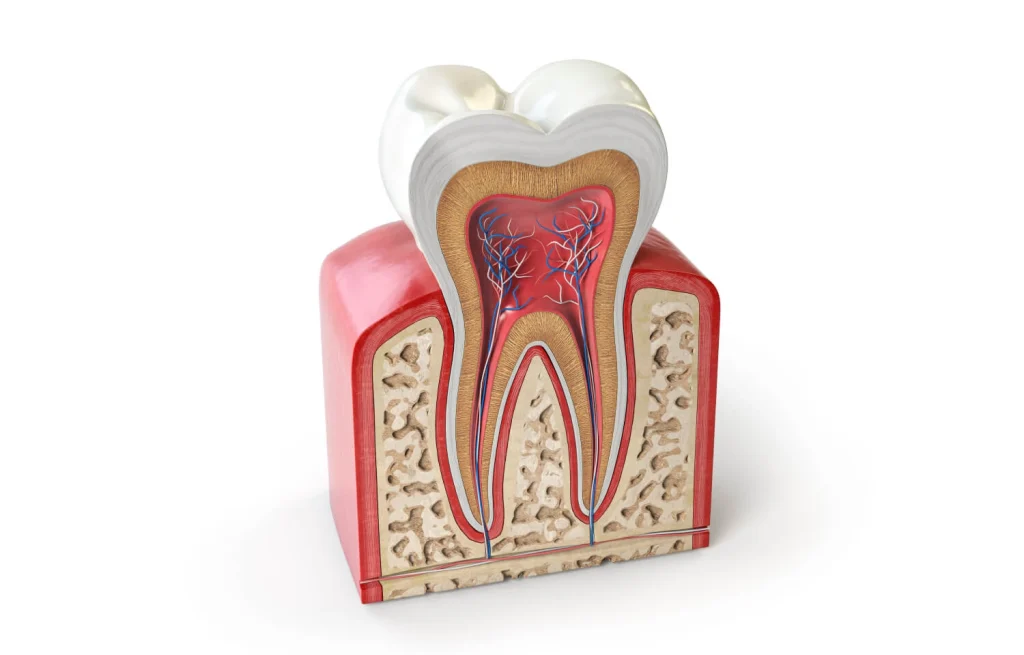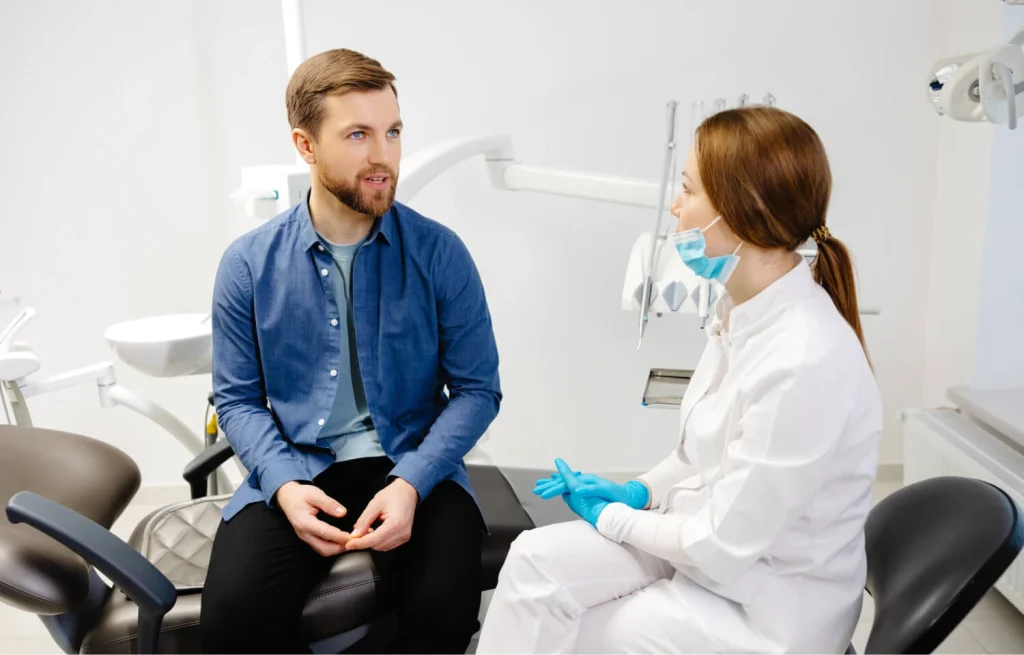How to Prepare for Tooth Extraction: A Comprehensive Guide
15 Feb 2025
Nervous about getting your tooth pulled? Don’t worry – you’re not alone. Good preparation can reduce your anxiety by a lot and help make the procedure and recovery smoother.
The proper preparation makes a big difference in your experience, whether you need a simple extraction or complex surgery.
Your extraction success depends on several things – understanding the procedure and following pre-extraction instructions carefully.
This detailed guide covers everything about preparing for your extraction, dealing with dental anxiety, and getting the best results.
The core team at Greenspoint Dental will work closely with you to ensure your comfort and safety through the whole ordeal.
Understanding Tooth Extraction
Dentists perform tooth extractions to address dental health issues of all types. A clear understanding of the procedure and its reasons will help ease your mind about getting a tooth removed.

Reasons for a Tooth Extraction
When it comes to teeth removal, your dentist may recommend a tooth extraction for several reasons.
- Severe decay or damage that cannot be repaired
- Impacted wisdom teeth causing discomfort or complications
- Overcrowding, often to accommodate orthodontic treatment
- Advanced gum disease affecting tooth stability
- Infection risks, especially for patients with compromised immune systems
Types of Tooth Extractions
- Simple Extraction: For teeth visible above the gum line, performed under local anesthesia.
- Surgical Extraction: For teeth broken, impacted, or below the gum line, requiring incisions and sometimes an oral surgeon’s expertise.
What to Expect During the Procedure
Your dental team prioritizes your comfort during the extraction procedure.
They start by applying local anesthesia to numb the area thoroughly. Sedation might be provided to keep you relaxed during surgical extractions.
The extraction process differs based on its type. A simple extraction involves your dentist using specialized tools to remove the tooth gently.
Surgical extractions may need small incisions, and the tooth might need to be divided into sections to remove it easily.
Note that your dentist at Greenspoint Dental will review your specific case and suggest the most suitable extraction type for you.
They will guide you through each step and address any questions about your tooth extraction preparation.
Preparing for Your Extraction
A successful tooth extraction starts with good preparation. We’ll guide you through everything you need to know to prepare for your procedure.
Medical History and Medication Review
Share your complete medical history and list of medications with your dentist. This helps manage risks and ensures safe treatment, particularly if you have:
- Heart conditions or artificial valves
- Artificial joints or liver disease
- A compromised immune system
If you’re on blood thinners, your dentist may collaborate with your physician to adjust dosages before the procedure.
What To Do Before Tooth Extraction
Follow these steps to prepare:
A week before surgery:
- You should stop taking aspirin and vitamin E products 5-7 days before surgery (unless your physician directs otherwise)
- Get all your prescribed medications
- Let your dentist know if you experience any cold or flu symptoms
The day before surgery:
Begin taking prescribed antibiotics and follow your mouth rinse instructions carefully. Your sedation procedure requires you to avoid food and drinks completely (including water) at least 8 hours before your appointment.
Wear comfortable, loose-fitting clothes with sleeves you can roll up easily.
Arranging transportation:
Sedation can affect your coordination and reflexes, making it unsafe to drive. Arrange for a trusted friend or family member to accompany you to and from the clinic.
Note that sedation effects typically last 2-6 hours after surgery and make driving unsafe. The dental team at Greenspoint Dental can help you explore alternative options if transportation arrangements become challenging.
The Extraction Procedure
Knowledge about your tooth extraction procedure helps reduce anxiety. Greenspoint Dental makes sure you stay comfortable during the procedure.
Anesthesia Options
We want you to feel comfortable during your tooth extraction. These pain management options help create a stress-free experience:
- Local anesthesia: Numbs the specific area around your tooth
- Nitrous oxide: Also known as “laughing gas,” keeps you relaxed while you stay awake
- IV sedation: Makes you drowsy or lets you sleep through the procedure
Step-By-Step Extraction Process
The extraction process begins after proper anesthesia and patient comfort. During a simple extraction, your dentist uses specialized tools called elevators to loosen the tooth and forceps to remove it gently from the socket.
A surgical extraction requires a small incision in your gum tissue. Your dentist gains access to the tooth and may need to section it into smaller pieces to remove it safely. You will stay comfortable and pain-free throughout the entire procedure.
Immediate Post-Extraction Care

After your tooth is removed, your dentist will:
- Clean the socket thoroughly
- Place gauze to control bleeding
- Provide instructions to promote clot formation
You’ll stay with us until the original bleeding stops and a blood clot starts to form. The process usually takes 30-45 minutes.
Your dentist will watch your recovery closely during this time and ensure you’re stable before heading home.
The team at Greenspoint Dental knows tooth extraction can feel overwhelming. We explain every step carefully and support you through the whole ordeal. Our experienced team stays by your side to make your procedure as comfortable as possible.
Recovery and Aftercare
Proper aftercare is crucial for healing and avoiding complications. Here are tips on what to do, and things to avoid after tooth extraction:
Managing Pain and Swelling
Apply ice packs in 20-minute intervals for the first 24–48 hours to reduce swelling. Use prescribed or over-the-counter pain relievers as directed, but avoid aspirin to minimize bleeding risks.
Keeping Your Mouth Clean
Wait 24 hours before rinsing your mouth. Then, gently rinse with a saltwater solution (¼ teaspoon salt in 8 ounces of water) 2–3 times daily.
Brush carefully around the extraction site.
The first few days are crucial, so avoid aggressive rinsing or spitting
Diet Recommendations

Your food choices substantially affect your healing process.
Stick to soft foods like:
- Yogurt and smoothies (no straw!)
- Mashed potatoes and well-cooked pasta
- Scrambled eggs and cottage cheese
- Lukewarm soups and broths
Avoid hot, spicy, or crunchy foods that can irritate the area. The blood clot needs protection, so avoid using straws for at least 72 hours.
When to Call Your Dentist

You might feel some discomfort after the procedure, but certain symptoms need immediate attention. Contact Greenspoint Dental if you experience:
- Severe pain or swelling that worsens after 3 days
- Excessive bleeding
- Signs of infection, such as fever
- Difficulty swallowing or breathing
Your recovery matters as much as the extraction itself. The team at Greenspoint Dental supports you throughout your healing experience. Please contact us with any concerns about your recovery process.
Conclusion
Understanding the process and following your dentist’s guidance can ensure a smooth experience and quick recovery. At Greenspoint Dental, we prioritize your comfort and well-being at every stage.
If you have concerns or need personalized advice, contact us today. Let our experienced team guide you to better dental health, one confident step at a time.
FAQs
What should I avoid doing before a tooth extraction?
Avoid smoking or using tobacco products for at least 24 hours before your appointment. It’s also advisable not to eat a heavy meal right before your extraction and to steer clear of alcohol and aspirin, as these substances can increase bleeding during and after the procedure.
How should I prepare my body for a tooth extraction?
If you’re receiving local anesthesia, fasting may not be necessary, but it’s best to confirm with your dentist. It’s crucial to avoid smoking post-procedure to prevent complications like dry sockets, which can significantly hinder the healing process.
What are some practical ways to reduce pain after a tooth extraction?
To manage pain following your tooth extraction, consider using prescribed pain medications or over-the-counter options. Applying cold or warm compresses can also help alleviate discomfort. Keeping your head elevated and following all post-operative care instructions from your oral surgeon will aid in a smoother recovery.
What preparations should I make the day before my tooth extraction?
Wear comfortable, loose-fitting clothes the day before your tooth extraction, and opt for a sleeveless or short-sleeved shirt. Remove contact lenses, jewelry, and watches, and choose flat-soled shoes that support good ankles. Avoid wearing fingernail polish and refrain from consuming alcohol and smoking for 24 hours before the surgery.
Related Blog Articles